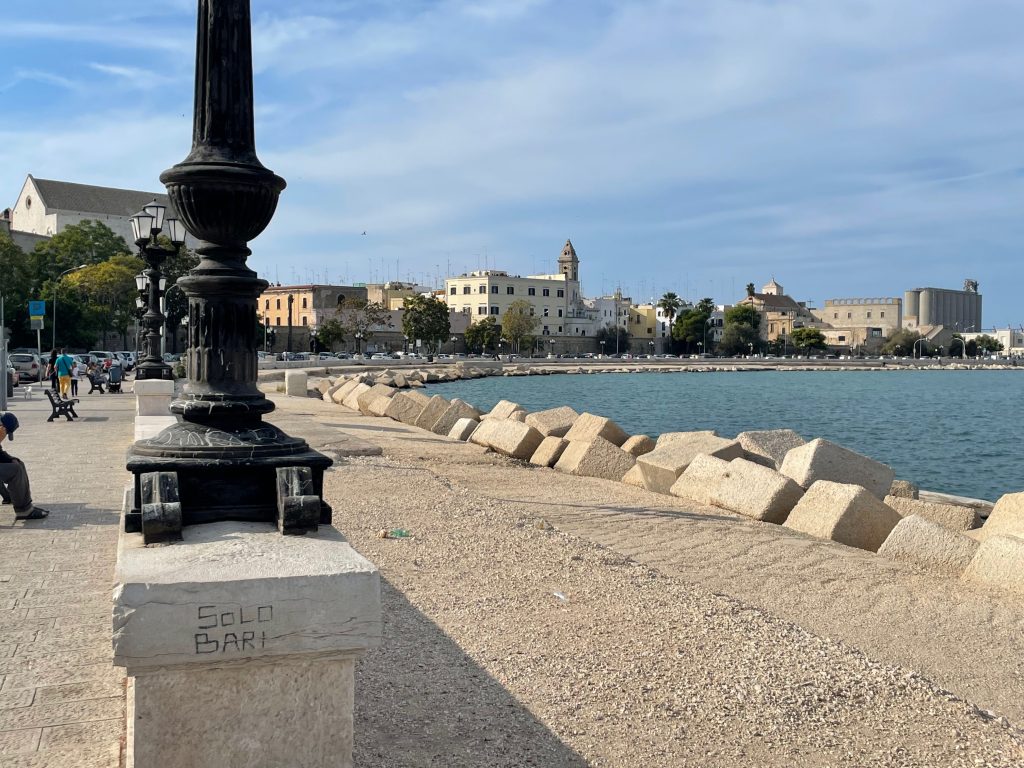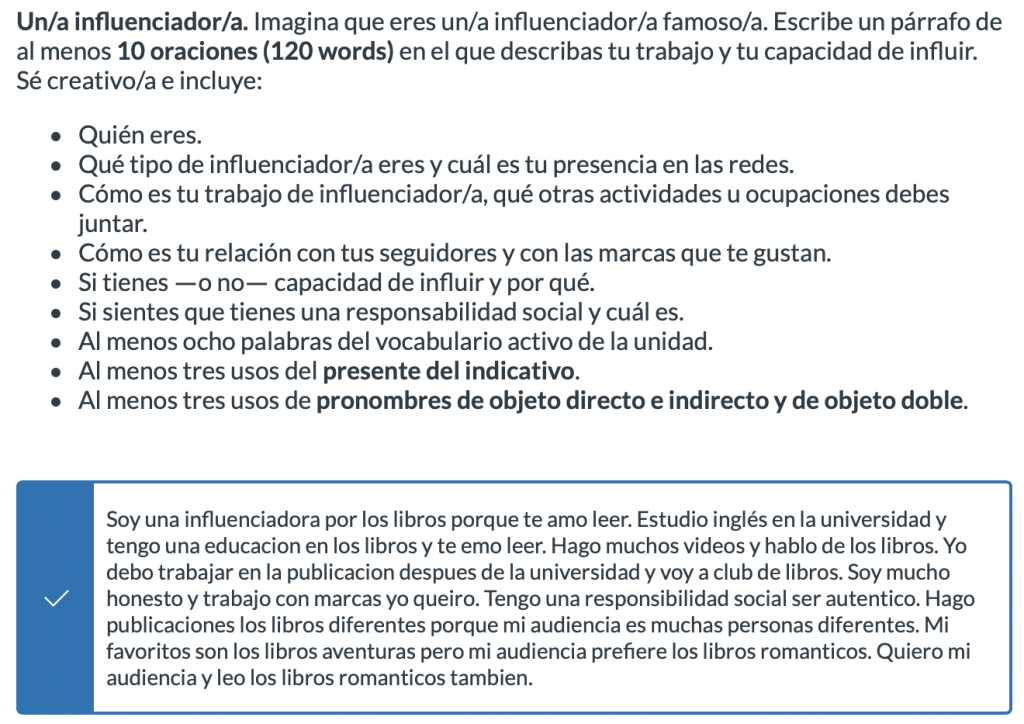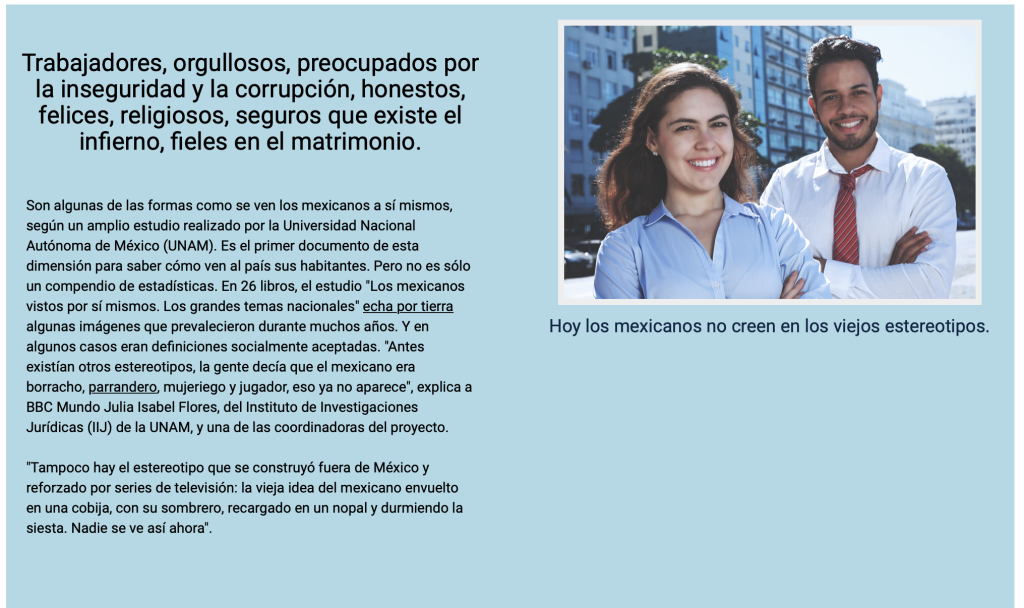Exploring Culture
Participating in culture related assignments helped me to gain a better understanding of Spanish speaking cultures. These cultural assignments required me to view videos created by Spanish speaking videos, read poetry and stories, and learn about different Hispanic cultures from these people’s points of view. One example (below), involved learning about the life of a Spanish influencer who uses his platform to fight stereotypes about his people.

Viewing stories such as these from points of view I did not previously know about or understand has allowed me to expand my knowledge base and form more educated opinions. Exposure to different lifestyles, cultures, and points of view is vital for students like myself to gain a broader world view and avoid supporting and falling for stereotypes and misinformation.
Engaging in Communities
Engaging in community allows people to interact with one another and gain a broader perspective on not only the community, but on life in general. Social interaction and engagement can be an extremely valuable tool for people to become more educated and insightful.
I choose to engage with communities and broaden my perspectives through travel. Visiting new places and experiencing different cultures in a respectful way allows us to gain insight on how other people live and the foundations of what makes them who they are.

Interpersonal Communication
TalkAbroad involved participating in 15 minute conversations with a Spanish speaking person from another country. In my TalkAbroad experiences, I spoke with a woman who lives in Mexico and a man who lives in Argentina. We spoke about family traditions, stereotypes, our home countries, and social influencers. There was a variety of topics that gave me an opportunity to explore many different ideas and vocabulary.
Applying what I have learned in a Spanish speaking conversation is always a challenge. I often get nervous and have difficulties remembering the vocabulary for what I am trying to say. I have found that one way to get past this is by speaking to people I know to practice. This type of practice makes me feel less nervous and less judged, allowing me to be more relaxed and be able to remember what I already know. I have also found that when traveling, I have an easier time picking up on new language terms and phrases when I am being fully exposed and immersed in the language. Since that is not always a practical solution, however, I feel very comfortable sticking with practicing on friends.
Presentational Speaking
One speaking activity we completed this semester was introducing ourself to the class in a video. These videos were short and in Spanish. This was our first time speaking to one another and our professor, although it was not a conversation.

Presentational Writing
In exams, I used the vocabulary I learned to create written works such as short narratives and poetry. In a few of these assignments, I had to take on a different perspective and put myself in the shoes of a Spanish speaking person in different situations. One example (below), asked me to pretend to be a Spanish speaking influencer.

I enjoy this type of assignment because I tend to excel in writing assignments. Although it is much more difficult to write in another language than it is to write in my native language, these assignments did allow me to explore the vocabulary I have learned and apply it in a creative way.
Interpretive Listening
Many of the informational videos presented in this class were in Spanish. By watching these, I was able to learn new information while also engaging information I have already learned.
One thing that helped me to practice listening and understanding was to watch some of my favorite movies that I know very well in Spanish. By doing this, I can use my baseline of knowledge about the movies to understand what the characters are saying.
Interpretive Reading
In LingroLearning, I completed many assignments that involved reading materials such as articles and short stories in Spanish and interpreting not only what they say, but also the importance of such. One example (below), is a multi-page article that explained the new ways that Mexican people define themselves.

These activities could be challenging if I was unfamiliar with all of the vocabulary, however, I could easily consult a Spanish dictionary and also use context clues when necessary. These activities, though challenging, were also interesting. In the one above, I was able to learn some culturally significant information while also challenging myself and practicing my vocabulary.